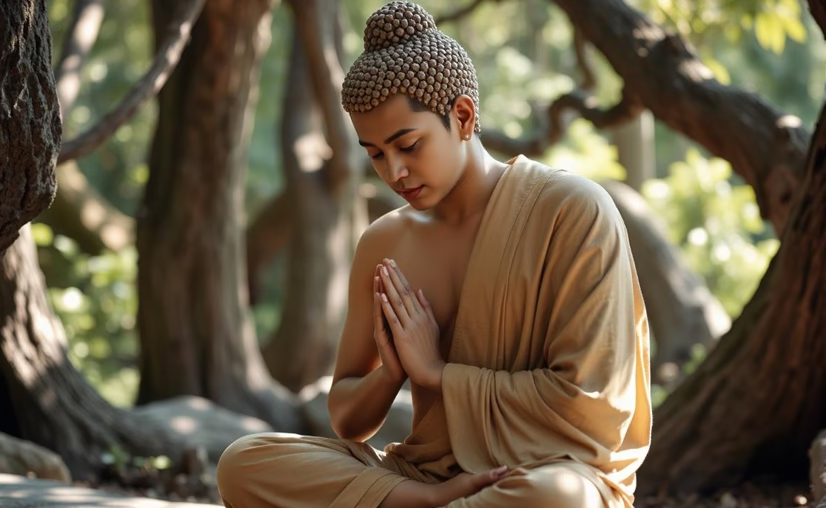Anapanasati: Peace Realized Through Breath

What is Anapanasati?
The Buddha taught Anapanasati as a fundamental meditation practice where practitioners learn mindfulness of breathing to develop peace and insight. Practitioners who maintain their attention on breath patterns strengthen their ability to concentrate while building mindfulness and present moment awareness. When I engaged in Anapanasati meditation during Sri Lankan retreats I discovered how simple yet powerful this practice is for settling the mind and enhancing self-awareness.
Roots in Buddhist Teachings
The Anapanasati Sutta (Majjhima Nikaya 118) demonstrates Anapanasati practice by describing 16 breath meditation steps which are grouped into four sets of four steps each.
- Body: Observing the breath’s physical sensations.
- Feelings: Noticing emotions arising with the breath.
- Mind: Cultivating mental clarity and focus.
- Wisdom: Developing insight into impermanence and liberation.
The Sutta Pitaka describes these steps as part of an awakening process that unfolds progressively.
How Anapanasati Cultivates Peace
The practice of Anapanasati creates a peaceful state by keeping the mind focused on the present moment while minimizing mental distractions and emotional responses. Practitioners who observe their breath gain equanimity and understand that thoughts and sensations are impermanent. According to a 2021 Mindfulness study breath-focused meditation decreases stress levels and improves emotional management which matches the objectives of Anapanasati.
The Practice in Action
- Basic Technique: Establish a comfortable sitting position while closing your eyes to direct your attention to the breathing sensations at the nostrils or abdomen.
- Mindfulness: Be aware of how the breath flows and feels while letting it remain uncontrolled.
- Progression: Through practice your awareness should extend to body sensations and emotional states as well as mental processes according to sutta instructions.
A daily ten-minute breath focus practice during a retreat created a calming effect which extended into my daily life and matches what many practitioners report.
Benefits of Anapanasati
The practice of Anapanasati produces positive effects on mental health as well as emotional and spiritual wellness.
- Mental Clarity: Supports better concentration while minimizing distractions which makes it an excellent tool for those with active daily schedules.
- Stress Relief: A 2020 study in the Journal of Psychosomatic Research shows that Anapanasati practice reduces cortisol levels.
- Emotional Balance: Promotes equanimity and reduces reactivity.
- Spiritual Insight: Strengthens comprehension of impermanence while showing the way to spiritual freedom.
The Beginner’s Guide to Buddhist Meditation offers additional meditation techniques.
How to Practice Anapanasati
Starting Anapanasati is simple and accessible. Follow these steps:
- Find a Quiet Space: Choose a calm environment to minimize distractions.
- Sit Comfortably: Keep your body straight to ensure you remain both attentive and relaxed.
- Focus on the Breath: Spend 10–20 minutes each session watching your breath move naturally while recording its physical sensations.
- Use Resources: Insight Timer hosts guided Anapanasati sessions which you can explore and study the Anapanasati Sutta through Access to Insight.
- Join a Community: Seek support through your local Buddhist Sangha.
Our Introduction to Buddhist Philosophy will help you expand your understanding of Buddhist practice.
FAQ: Common Questions About Anapanasati
What is Anapanasati in Buddhism?
Through breath-focused meditation Anapanasati develops mindfulness and insight which brings about inner peace and spiritual awakening.
How does Anapanasati foster peace?
The practice of Anapanasati creates mental silence and emotional stability by focusing attention on breathing which leads to a peaceful and balanced state of mind.
What are the steps of Anapanasati meditation?
The Anapanasati technique includes 16 meditation steps divided into four tetrads that develop mindfulness in the body, feelings, mind and wisdom according to the Anapanasati Sutta.
How can beginners practice Anapanasati?
Newcomers to Anapanasati should begin with 10-minute breathing sessions and explore guided meditation options alongside sutta study to develop their practice.
Conclusion: Finding Peace Through Anapanasati
The practice of Anapanasati leads to peace through focused awareness on breathing. The combination of mindfulness training and insight creates a route leading to clear thinking and spiritual freedom. Start your mindfulness journey with today’s short breath meditation session and then share your insights in the comments or subscribe to access further Buddhist teachings to enhance your practice.